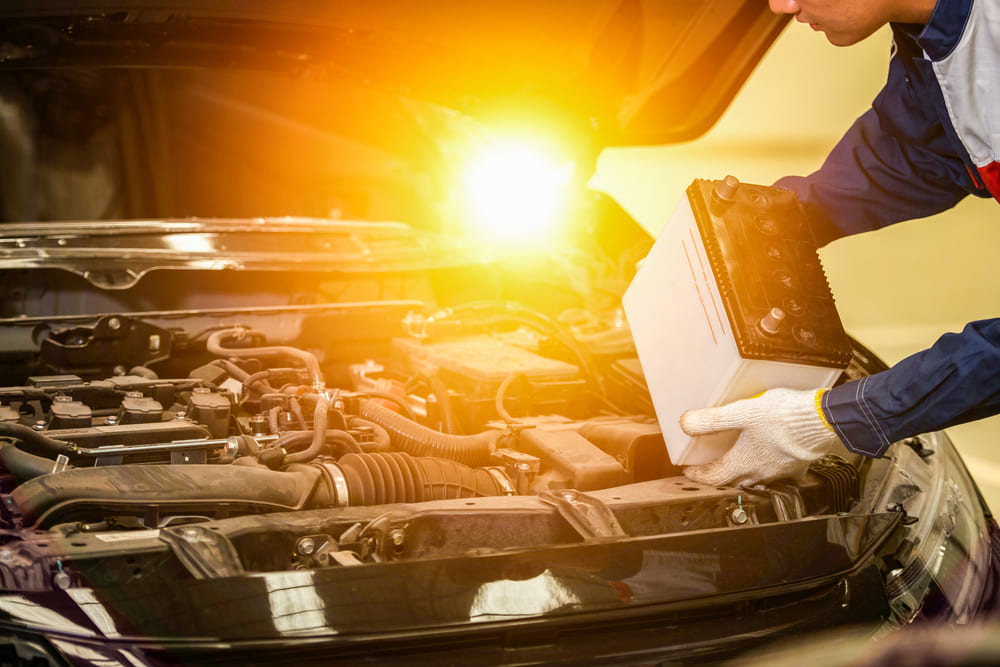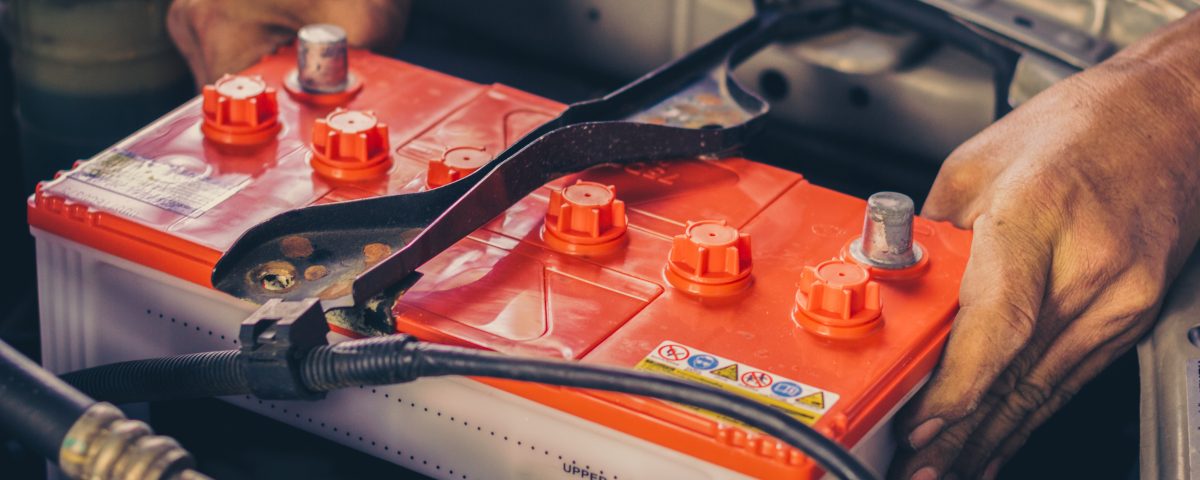
How to Repair Car Scratches Like a Pro
March 23, 2020
Car Tyre Care Tips
May 13, 2020Car battery maintenance is essential for ensuring reliable vehicle performance and avoiding unexpected breakdowns. While many drivers focus on engine upkeep and fuel efficiency, the battery often gets overlooked until problems arise. Proper car battery care when not in use ensures the battery remains in optimal condition, providing power to start the engine and support electrical components. Neglecting maintenance can lead to reduced performance, shorter lifespan, and unexpected failures.
Cars that sit idle for extended periods face specific challenges affecting battery health. The battery gradually loses charge due to self-discharge and parasitic draws from electronics. In colder climates, temperature fluctuations can worsen this issue. Expert guidance, such as that offered by ScuffDoc, is invaluable in navigating these challenges. Our experts provide essential insights to help car owners effectively maintain battery health, ensuring vehicles remain reliable and ready for use when needed.
Understanding Car Batteries
Car batteries come in various types, each with distinct characteristics that influence their performance and longevity. Understanding these differences is crucial for maintaining optimal battery health and ensuring reliable vehicle operation.
Types of Car Batteries and Their Characteristics
Lead-Acid Batteries
- Conventional (Flooded) Lead-Acid: The most common type, known for its affordability and robustness.
- Absorbent Glass Mat (AGM): Features a fibreglass mat separator that absorbs the electrolyte, offering higher resistance to vibration and better performance in cold weather.
- Gel Cell: Uses silica to immobilise the electrolyte, providing better resistance to vibration and deep cycling.
Lithium-Ion Batteries
- Known for their lightweight, compact size, and high energy density, making them ideal for electric and hybrid vehicles.
- Offers a longer lifespan and faster charging capabilities compared to lead-acid batteries.
Effects of Non-Use on Car Batteries

When cars are not used regularly, their batteries can suffer from various issues that impact performance and longevity. Understanding these effects is essential for maintaining battery health and ensuring reliable vehicle operation.
How Quickly Car Batteries Can Lose Charge When Not in Use
Research indicates that car batteries can lose charge at varying rates depending on factors such as temperature and battery type. On average, a car battery can lose between 0.5% to 1% of its charge per day when not in use. In colder climates, this rate can increase due to higher self-discharge rates and increased demand for vehicle electronics.
Read More: How to Repair Car Scratches Like a Pro
Common Issues That Arise Due to Prolonged Non-Use
Sulfation
- Prolonged non-use prevents the battery from fully charging, leading to the formation of lead sulfate crystals on the battery plates.
- This reduces the battery’s capacity to hold a charge over time and can ultimately lead to premature failure.
Corrosion and Build-Up
- Lack of use allows corrosion to form on battery terminals and connections, affecting electrical conductivity.
- Accumulation of dirt and debris around the battery can also lead to issues with airflow and heat dissipation, further impacting battery performance.
Parasitic Drain
- Electronic systems such as alarms, clocks, and onboard computers draw a small amount of power even when the vehicle is not in use.
- Over time, this parasitic drain can deplete the battery, particularly in vehicles with advanced electronics.
Optimal Storage Conditions
Preserving battery life during vehicle storage requires careful consideration of environmental factors and proper maintenance practices. Research-backed recommendations provide valuable insights into optimising storage conditions to ensure the battery remains in good condition and ready for use when needed.
Recommendations on Storing a Car to Preserve Battery Life
Choose a Cool, Dry Location: Store the vehicle in a cool, dry place away from direct sunlight and extreme temperatures. According to research, temperatures above 80°F (26.7°C) can significantly accelerate battery self-discharge rates, leading to quicker depletion over time.
Use a Battery Maintainer or Trickle Charger: A battery maintainer or trickle charger can help maintain the battery’s charge level during extended periods of non-use. Studies show that using a maintainer or charger can reduce the risk of battery sulfation and prolong battery life by ensuring it remains at an optimal charge level.
Disconnect Battery Terminals: Disconnecting the battery terminals can prevent the parasitic drain from vehicle electronics, which can gradually deplete the battery over time. Even modern vehicles with minimal electronics can experience parasitic drains.
Impact of Temperature and Environment on Battery Health
High Temperatures: Exposure to high temperatures can accelerate chemical reactions inside the battery, leading to faster degradation. According to research, every 15°F (8.3°C) increase above 77°F (25°C), battery life can decrease by up to 50%.
Low Temperatures: Cold temperatures increase the battery’s internal resistance, making it harder for the battery to deliver power during cold starts. Statistics show that at 0°F (-17.8°C), a car’s battery loses about 60% of its strength, while at 32°F (0°C), it loses about 35%.
Humidity and Ventilation: Ensure the storage area is well-ventilated to prevent moisture buildup, which can lead to corrosion and electrical issues. Humidity can also affect battery terminals and connections, so periodic inspection and cleaning are recommended to maintain optimal conductivity.
Read More: How to Keep Your Alloy Wheels in Great Condition
Maintenance Tips For Car Battery Care When Not In Use

Maintaining battery health during periods of non-use is critical to ensuring your vehicle starts reliably when needed. Adopting helpful strategies and conducting regular inspections can significantly prolong battery life and prevent unexpected failures.
Strategies for Car Battery Care When Not In Use
Use of Battery Maintainers: Battery maintainers, also known as trickle chargers, provide a low-level charge to offset self-discharge and keep the battery at an optimal level. A maintainer can extend battery life by preventing sulfation and ensuring the battery remains fully charged.
Charge Management: Avoid allowing the battery to remain in a deeply discharged state for extended periods, as this can lead to irreversible damage. Data indicates that keeping the battery charge level above 40% during storage minimises the risk of capacity loss and prolongs overall lifespan.
Periodic Charging and Cycling: Periodically charge the battery to full capacity and then allow it to discharge slightly before recharging. This practice helps prevent the buildup of lead sulfate crystals (sulfation) on the battery plates, which can impair performance.
Read More: A Complete Guide To Alloy Wheel Repairs
Importance of Regular Inspection and Testing
Visual Inspection: Regularly inspect battery terminals for corrosion, ensuring they are clean and free from buildup that can impede electrical conductivity. Studies indicate that corrosion is a common cause of battery failure and can be prevented with routine maintenance.
Battery Testing: Conduct battery load tests periodically to assess its cranking amps (CA) and cold-cranking amps (CCA) capabilities. Testing helps identify early signs of battery deterioration, allowing for proactive replacement before failure occurs.
Environmental Considerations: Be mindful of storage conditions and environmental factors that can affect battery health, such as temperature extremes and humidity. Maintaining stable storage conditions can significantly prolong battery lifespan.
Read More: Should I Get My Alloys Refurbished
Final Thoughts
Maintaining car battery care when not in use is essential for ensuring reliable vehicle performance and avoiding unexpected breakdowns. Understanding the challenges faced by idle vehicles and adopting proactive strategies can ensure your car remains reliable and ready for use. By taking these steps, you can prevent battery degradation and costly issues, ensuring peace of mind and long-term vehicle reliability. Proactive maintenance is key to maintaining battery health and ensuring your vehicle is always ready when you need it.




